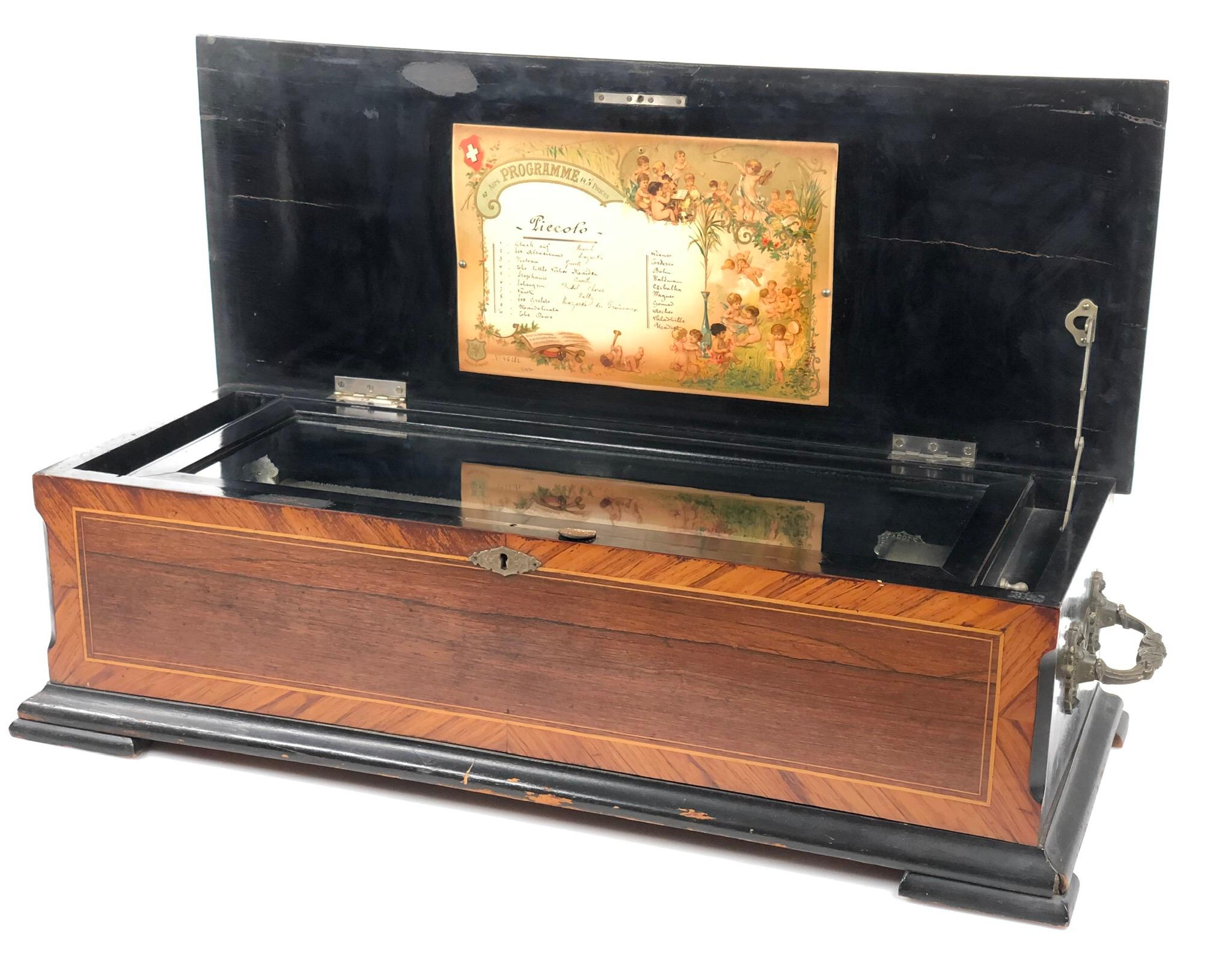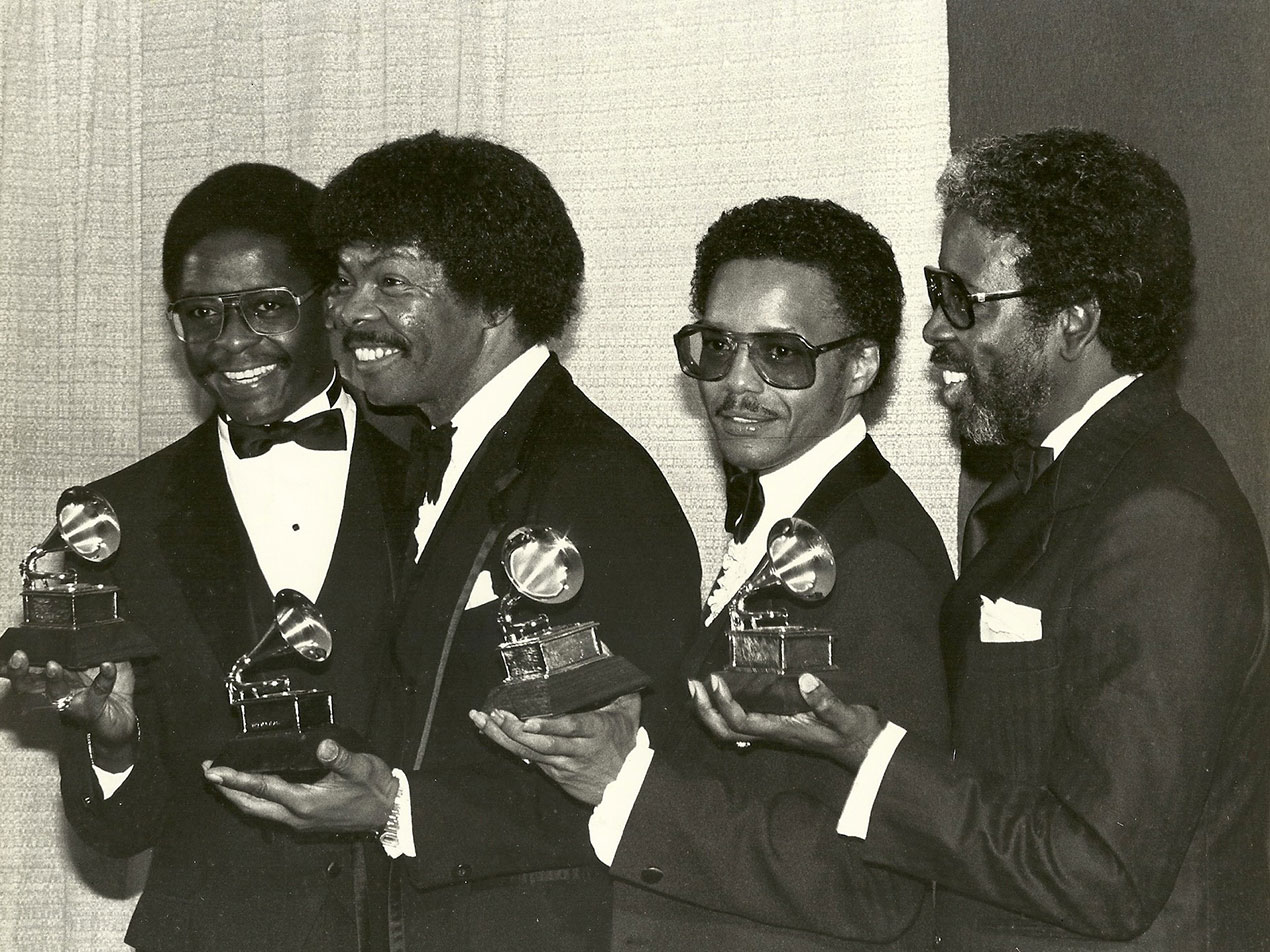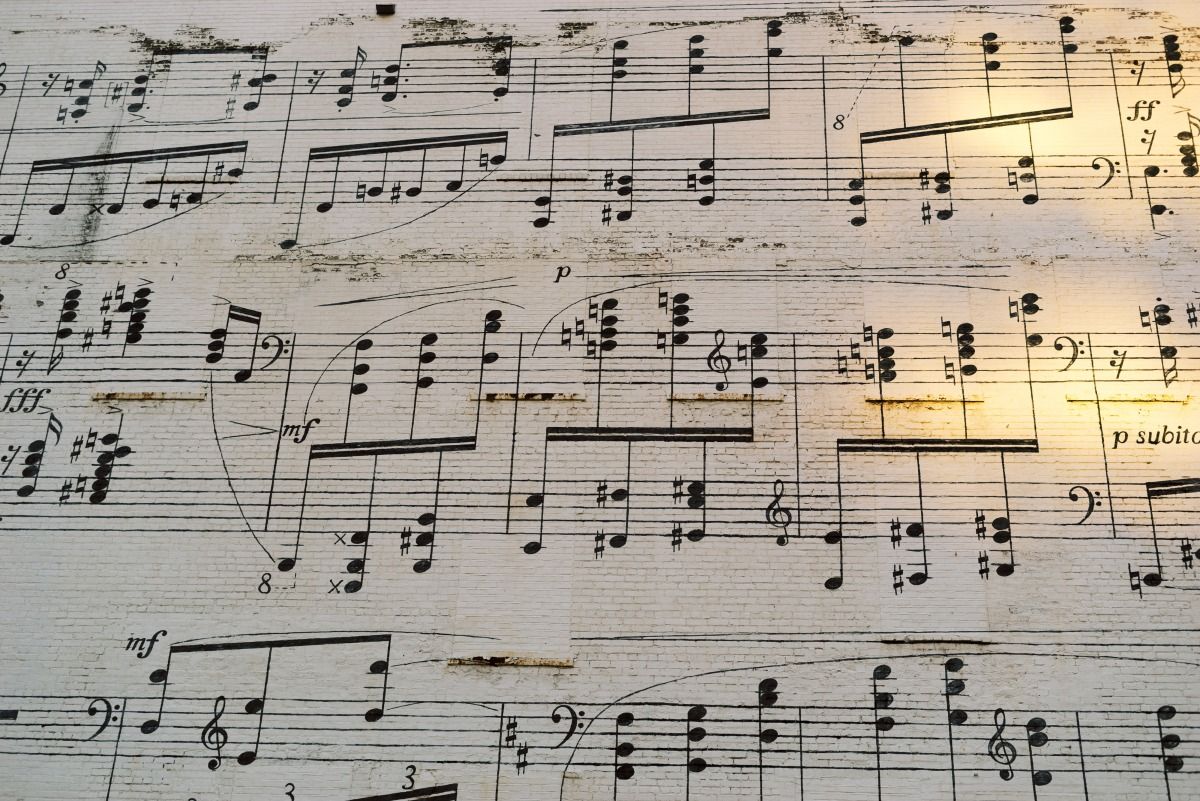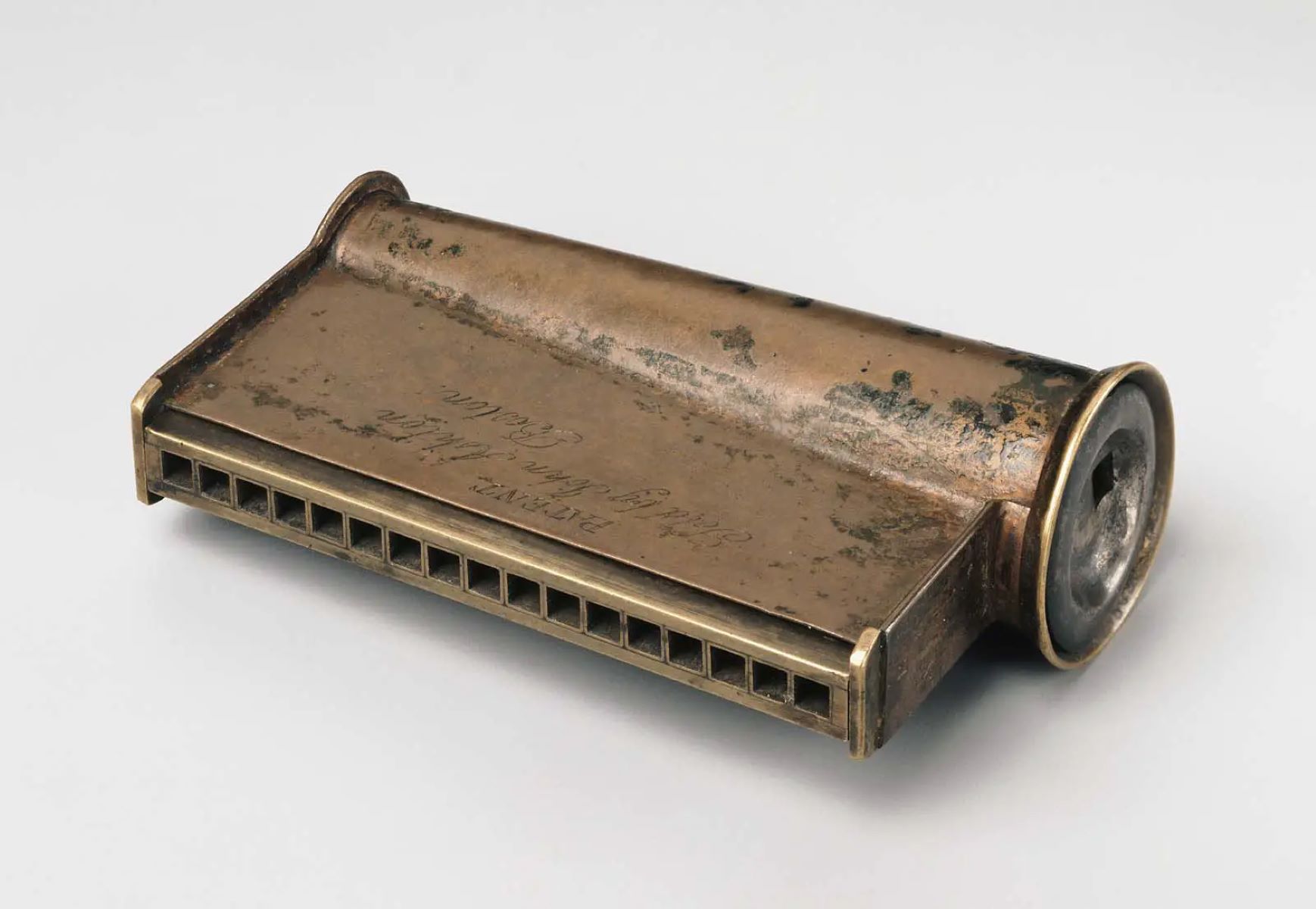Home>Devices & Equipment>Music Box>How To Tell When Music Box Made
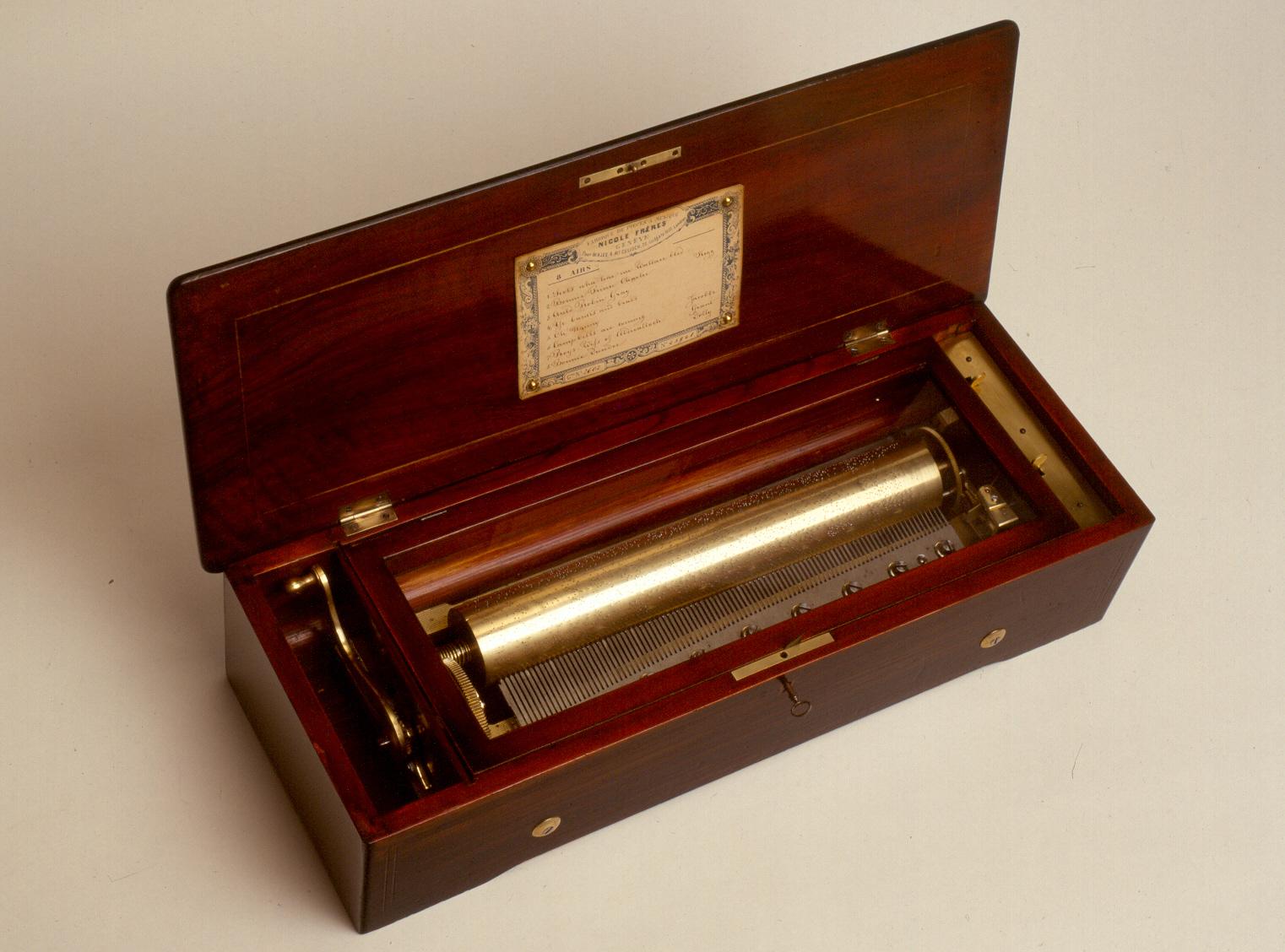

Music Box
How To Tell When Music Box Made
Published: January 12, 2024
Discover the secrets of determining the age and origin of your beloved music box. Learn how to tell when a music box was made with expert tips and techniques.
(Many of the links in this article redirect to a specific reviewed product. Your purchase of these products through affiliate links helps to generate commission for AudioLover.com, at no extra cost. Learn more)
Table of Contents
Introduction
Music boxes have a unique charm that has captivated people for centuries. These exquisite creations are not only musical instruments but also works of art. Whether you’re a collector or simply fascinated by these mechanical wonders, knowing how to determine when a music box was made can greatly enhance your appreciation for these delicate treasures.
When it comes to identifying the age of a music box, various factors come into play. From the materials used to the intricacy of the design, each element provides clues that can help unlock the box’s history. By understanding the evolution of music box craftsmanship and familiarizing yourself with key features, you can gain valuable insights into the time period in which a music box was created.
In this article, we will explore the rich history of music boxes, delve into their key features, discuss materials and construction methods, explore different styles and designs, and provide expert tips on researching and dating music boxes. Whether you have a vintage music box in your possession or simply enjoy learning about these fascinating instruments, this guide will offer valuable information to help you discover the age and origin of your music box.
So, get ready to embark on a journey through time as we uncover the secrets and intricacies of music boxes. From the stunning craftsmanship of the past to the modern iterations of today, let’s unravel the mystery of when a music box was made.
History of Music Boxes
The history of music boxes dates back to ancient times, with evidence of mechanical musical devices found in civilizations such as Ancient Greece and Ancient China. However, it wasn’t until the 18th century that music boxes as we know them today began to be developed.
It was in the 18th century that music boxes became popular among the upper classes of Europe. These early music boxes were often small and designed to be portable, resembling small chests or snuffboxes. They were hand-cranked and used a series of pins or cylinders to produce musical notes.
As time went on, music boxes grew in complexity and grandeur. In the 19th century, Switzerland emerged as the hub of music box production, with skilled craftsmen perfecting the art of mechanical music. These Swiss music boxes were highly sought after for their precision and exquisite sound.
During the Victorian era, music boxes became a symbol of wealth and opulence. Elaborately decorated with intricate woodwork, inlays, and ornate designs, these music boxes were often regarded as valuable collector’s items.
The development of technology in the 20th century brought significant advancements to music box production. Electric-powered music boxes were introduced, eliminating the need for hand-cranking. This allowed for larger, more complex arrangements of musical compositions.
However, the rise of recorded music and the invention of devices like phonographs and radios led to a decline in the popularity of music boxes. Despite this, they still hold a special place in the hearts of collectors and enthusiasts, as they embody a bygone era of craftsmanship and beauty.
Today, music boxes continue to be produced, combining traditional techniques with modern designs. They are cherished as keepsakes and gifts, evoking a sense of nostalgia and enchantment.
From their humble beginnings as simple mechanical devices to their status as cherished heirlooms, the history of music boxes is a testament to human creativity and our enduring fascination with the beauty of music.
Key Features of Music Boxes
Music boxes are not only admired for their melodies but also for their intricate designs and precise craftsmanship. When trying to determine the age of a music box, examining its key features can provide valuable insights into its origin and time period.
One of the first features to consider is the size and shape of the music box. Early music boxes were often small and portable, designed to be carried in pockets or purses. As time progressed, larger and more elaborate music boxes were created, often serving as decorative pieces for the home.
The material used in the construction of the music box is another important aspect to consider. Early music boxes were typically made from wood, while later models began incorporating metal components. The type of wood, such as rosewood or mahogany, can offer clues about the age and quality of the music box.
The music mechanism itself is a crucial feature to examine. In older music boxes, pinned cylinders were commonly used to produce the musical notes. Later advancements introduced disc mechanisms and interchangeable cylinders, allowing for a wider repertoire of melodies to be played.
The quality of the sound produced by a music box is a definitive characteristic. High-quality music boxes produce a clear, resonant sound, indicating skilled craftsmanship. The presence of dampers, which control the duration of each note, is another feature to look for and can indicate a higher level of sophistication.
The exterior design and decoration of a music box can also provide important clues about its age. Early music boxes were often adorned with intricate engravings, hand-painted scenes, or intricate inlays. As time went on, decorative techniques such as marquetry, mother-of-pearl inlays, and ornate metalwork became popular.
Lastly, examining any inscriptions or markings on the music box can offer valuable insights. Some music boxes bear the signature or logo of the manufacturer, providing specific information about the maker and potentially a timeline of production.
By closely examining these key features, you can begin to piece together the puzzle of when a music box was made. Remember, each era brings its own unique styles and techniques, making every music box a window into a specific period of history.
Materials and Construction Methods
The materials used in the construction of music boxes have evolved over time, reflecting advancements in technology and the availability of resources. Understanding the materials and construction methods used in different eras can help in identifying the age and authenticity of a music box.
In the early days of music box production, wood was the primary material of choice. Different types of wood, such as walnut, oak, or mahogany, were used for the cases and frames. These woods were carved, shaped, and polished to create elegant and intricate designs. Some luxury music boxes featured exotic woods like rosewood or burr walnut.
As technology advanced, metal components started to be incorporated into music boxes. Brass, bronze, and other metals were used for the mechanical parts, including the wind mechanism, gears, and pins. The addition of metal parts enhanced the durability and functionality of the music boxes.
In addition to wood and metal, other materials were often utilized to enhance the aesthetics of music boxes. Mother-of-pearl, ivory, and tortoiseshell were commonly used for decorative inlays. These materials added elegance and intricacy to the overall design.
The construction methods employed in music box production have also evolved. Early music boxes were predominantly handcrafted, with skilled artisans carving and assembling the various components. Intricate designs were achieved through painstaking attention to detail. Meticulous craftsmanship was required for the precise alignment and fitting of the mechanical parts.
As industrialization took hold, mass production methods were introduced. Music box manufacturers started using machines and tools to streamline the production process. This led to more efficient and cost-effective manufacturing, allowing music boxes to be produced on a larger scale.
The combination of handcrafted and machine-made elements can be seen in music boxes from different time periods. Examining the quality and intricacy of the craftsmanship can provide insights into the manufacturing techniques used during a particular era.
It’s worth noting that there can be variations in materials and construction methods across different regions and manufacturers. For example, Swiss music boxes were known for their precision and attention to detail, while French music boxes often showcased elaborate and ornate designs.
By understanding the materials and construction methods employed in the creation of music boxes throughout history, you can gain a deeper appreciation for the level of artistry and skill that went into crafting these remarkable musical treasures.
Styles and Designs of Music Boxes
Music boxes come in a wide variety of styles and designs, each reflecting the artistic tastes and trends of its time. From the elegant simplicity of early models to the ornate and intricate designs of later periods, examining the styles and designs can provide valuable clues in determining the age and origin of a music box.
One of the earliest and most identifiable styles is the snuffbox-style music box. These small, portable boxes were popular in the 18th century and often featured simple and understated designs. They were typically made of wood or metal and were meant to be carried in pockets or purses, serving as both a musical entertainment and a fashion accessory.
As music box production progressed, more elaborate designs emerged. During the Victorian era, music boxes became highly decorative pieces. They were adorned with ornate woodwork, intricate inlays, or hand-painted scenes. The styles ranged from romantic and floral motifs to scenes of landscapes, animals, or historical events.
Another popular style is the cylinder music box, which became widely produced in the 19th century. The cylindrical shape allowed for the use of a pinned metal cylinder, which would rotate and pluck the tuned teeth of a comb to produce the music. Cylinder music boxes were often encased in elaborate wooden or metal cases, featuring intricate carvings or embellishments.
Influences from different cultures and eras also played a role in music box design. For example, the Art Nouveau movement, popular in the late 19th and early 20th centuries, brought about flowing and organic designs inspired by nature. Art Deco style, characterized by geometric shapes and bold lines, influenced music box design in the 1920s and ’30s.
In the mid-20th century, with the rise of technology, music boxes saw a shift in design as well. Modern and sleek designs emerged, incorporating new materials like plastic and other synthetic materials. Some music boxes even took on futuristic designs, mirroring the aesthetic of the time.
It’s important to note that design trends may vary based on geographical location and the specific manufacturer. Swiss music boxes, for example, often showcased intricate woodwork and carved details, whereas German music boxes were known for their precision and technical innovations.
By studying the various styles and designs of music boxes, you can gain insights into the prevailing artistic influences and craftsmanship of different eras. This knowledge can assist in dating and appreciating the unique beauty of each music box as a reflection of its respective time period.
Signatures and Markings on Music Boxes
Signatures and markings on music boxes can offer valuable information about their origins, makers, and sometimes even their production dates. These identifying marks can range from engraved signatures and logos to serial numbers or manufacturing labels.
One common marking found on music boxes is the signature of the manufacturer. This can be engraved or stamped onto the case, mechanism, or even the tune sheet. The signature often includes the name of the company or individual responsible for producing the music box. Certain manufacturers gained reputations for their exceptional craftsmanship and attention to detail, which can add value to a music box.
In addition to signatures, some music boxes may bear a logo or emblem associated with the manufacturer. These trademarks can be in the form of a graphic design, an engraved symbol, or even a specific font style. Identifying and researching these logos can lead to more information about the manufacturer and provide insights into the time period in which the music box was produced.
Serial numbers are another type of marking that can be found on music boxes. These numbers are unique identifiers assigned to each individual music box during the manufacturing process. Serial numbers can help identify the production line, batch, or specific time period of the music box’s creation. Researching these numbers may lead to catalogs or records that provide additional information about the music box and its production.
Some music boxes may also feature labels or paper tags with printed information. These labels often provide details such as the maker’s name, location, model number, or patented technology. Labels can provide valuable clues about the origin and production period of the music box, especially if they are intact and well-preserved.
It’s important to note that not all music boxes will have markings or identifiable signatures. Some older or handmade music boxes may not have any distinguishing marks, while others may have had their markings worn off over time. In such cases, other factors like style, materials, and craftsmanship become critical in determining the age and origin of the music box.
Researching and documenting the signatures and markings found on a music box is essential for identifying its origins and unlocking its historical significance. Whether through online resources, music box collector communities, or consulting with experts, piecing together the puzzle of these markings can provide a deeper understanding of the music box’s background and enhance its value as a piece of history.
Researching and Dating Music Boxes
Researching and dating music boxes can be a fascinating journey, allowing you to delve into the history and origins of these beautiful instruments. By utilizing various resources and techniques, you can uncover valuable information that will help you determine the age and authenticity of a music box.
One of the first steps in researching a music box is to gather as much information as possible about its markings, labels, or signatures. Take note of any identifiable names, logos, or numbers, and conduct online searches or consult reference books to identify the manufacturer and gather historical information about their production timeline.
Online databases and collector forums can be valuable resources for researching music boxes. Websites dedicated to music box enthusiasts often provide detailed information, catalogs, and even forums where collectors can exchange knowledge and experiences. Engaging with the community can offer valuable insights and assistance in identifying specific models, manufacturers, and production dates.
Consulting with experts and appraisers specializing in music boxes can also provide valuable expertise. These professionals have extensive knowledge about different eras, manufacturers, and construction techniques. They can analyze the unique characteristics of a music box and provide insights into its age and value.
Examining the construction and materials of a music box can offer important clues for dating purposes. Familiarize yourself with the manufacturing techniques and styles popular during different periods. Identifying specific materials, design elements, or trends can help pinpoint the era in which a music box was created.
Collecting and analyzing catalogs, advertisements, and manufacturers’ records can provide valuable information about the production dates and models associated with a music box. Many manufacturers kept detailed records of their production, which can be found in archives or private collections.
It’s important to approach the dating process with an open mind and to consider multiple factors in combination. While markings and labels can provide useful information, they should always be cross-referenced with other characteristics such as style, materials, craftsmanship, and technology used.
Lastly, don’t forget the power of physical observation. Examining the music box closely can reveal signs of wear, repairs, or modifications that can contribute to its dating process. Additionally, comparing the music box to other known examples from the same period can help to establish a timeline.
Researching and dating music boxes requires a meticulous and comprehensive approach. By combining various resources, consulting experts, and developing a keen eye for details, you can unlock the story and historical significance of your music box and gain a deeper appreciation for its craftsmanship and beauty.
Expert Tips for Identifying the Age of a Music Box
Identifying the age of a music box can be a challenging task, as it requires a careful examination of various factors and expert knowledge. Here are some valuable tips from experts that can assist you in determining the age of a music box:
- Examine the construction techniques: Different periods had distinct construction methods. Pay attention to the joinery, fasteners, and materials used. Early music boxes were often handcrafted, while later ones may display more machine-made elements.
- Study the mechanics: Each era brought advancements in musical mechanisms. Cylinder mechanisms were prevalent in the 19th century, while disc mechanisms became popular in the early 20th century. Understanding the development of these mechanisms can help in narrowing down the age.
- Observe the design details: Styles and designs change over time, influenced by prevailing artistic movements. Pay attention to the ornamentation, engravings, and decorative motifs. Compare the design elements with known examples from specific periods to help with dating.
- Research the manufacturer: Identifying the maker and researching their production timeline can provide valuable insights. Consult books, online databases, and specialized forums to gather information about the history and legacy of the music box manufacturer.
- Consider the materials used: Different materials were favored in different eras. Early music boxes often used wood, while later ones incorporated metal components. Understanding the availability and popularity of certain materials can aid in dating a music box.
- Explore the music repertoire: The type of music played by the music box can offer clues to its age. Certain tunes became popular or faded out of favor during specific time periods. Research popular melodies of different eras to help identify possible date ranges.
- Consult with experts: Seek the assistance of knowledgeable experts and appraisers specializing in music boxes. Their expertise and experience can provide invaluable insights into the age, authenticity, and historical context of a specific music box.
- Compare with known examples: Look for similar music boxes from reputable collections or museums that have well-documented ages. Comparing the characteristics of your music box with these known examples can help in establishing a relative timeframe.
Keep in mind that identifying the age of a music box often requires a combination of these tips and a thorough examination of multiple factors. It’s essential to approach the process with patience, an eye for detail, and an open mind. By utilizing these expert tips, you can enhance your ability to accurately date and appreciate the beauty and historical significance of a music box.
Conclusion
Music boxes hold a special place in our hearts as both musical instruments and artistic treasures. Determining the age of a music box can greatly enhance our understanding and appreciation of these intricate and beautiful creations. Throughout history, music boxes have evolved in terms of design, materials, and construction methods, reflecting the artistic trends and technological advancements of their respective eras.
By examining key features such as size, materials, mechanisms, and design elements, we can begin to unravel the story behind a music box. Signatures, markings, and labels can provide valuable clues about the manufacturer and production timeline, while researching catalogs, advertisements, and manufacturers’ records can further narrow down the age and model of a music box.
Expert tips offer guidance on observing construction techniques, mechanics, design details, and music repertoire to aid in dating a music box. Consulting with experts and engaging with music box communities can provide valuable insights and knowledge-sharing opportunities.
Ultimately, the process of researching and dating a music box requires a combination of analytical skills, historical understanding, and attention to detail. It’s an exploratory journey that allows us to connect with the craftsmanship and stories encapsulated in each music box, transcending time and reminding us of the enduring magic of music.
Whether you’re a collector, an enthusiast, or simply curious about the history of music boxes, the ability to identify their age and authenticity adds a new dimension to the joy they bring. So, embark on your own adventure of uncovering the age and hidden stories behind your music box collection, and let the melodies transport you to bygone eras of beauty and craftsmanship.

